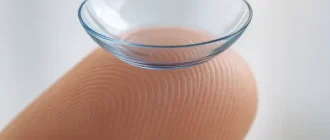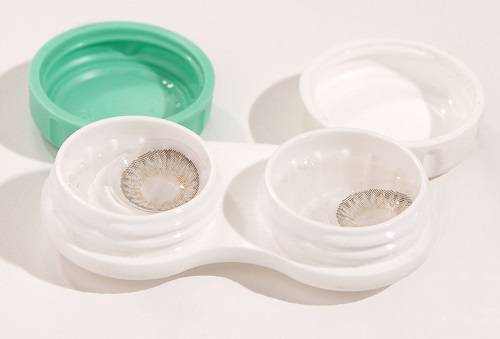When it comes to improving vision, we find ourselves standing between two popular options: contact lenses and glasses. It’s a debate that has spanned decades, with passionate advocates on both sides. But rather than taking sides, this article will guide you through the key differences, helping you to make an informed decision based on your lifestyle, preferences, and needs. We’ll take a detailed look into the practical, health, and financial aspects of both options, backed by data, expert opinions, and real-world situations.
How Many People Use Contacts or Glasses? The Numbers Say It All
Glasses have been the traditional choice for vision correction for centuries, and they continue to lead the way in terms of user preference. According to Vision Council statistics, about 164 million adults in the United States wear prescription eyewear, with over 60% choosing glasses over contacts. On the other hand, contact lenses are worn by approximately 45 million Americans, indicating their increasing popularity—especially among younger adults and teens.
Interestingly, the 2023 Vision Care Consumer Report shows that 62% of contact lens wearers are between the ages of 18 and 34, suggesting a generational preference toward this solution, likely due to lifestyle factors such as sports, aesthetics, and comfort. Let’s delve deeper into what makes each option attractive and the potential drawbacks you should consider.
Comfort and Practicality: Day-to-Day Realities
Glasses: Effortless and Reliable
Glasses are often celebrated for their convenience. They’re easy to put on, easy to remove, and require minimal maintenance. Dr. Jonathan Smith, an optometrist with over 25 years of experience, says, “For many, glasses are the easiest solution because they don’t touch the eye, and there’s virtually no risk of infection or complications.” Plus, glasses can double as a style statement, with brands and designs catering to all tastes—from minimalist wire frames to bold, fashion-forward acetate.
Pros:
- Easy to use and maintain
- No direct contact with the eye, reducing infection risk
- Aesthetic versatility, doubles as a fashion accessory
Cons:
- Can fog up in humid conditions
- Might be inconvenient for sports or physical activities
- Limited peripheral vision
Contact Lenses: The Invisible Vision Solution
Contacts, on the other hand, offer a different kind of freedom. They don’t obstruct your facial features, don’t fog up in cold weather, and allow for a natural field of vision without the boundaries of frames. For athletes, dancers, or anyone who leads an active lifestyle, contacts are often the go-to choice.
However, contact lenses come with the responsibility of regular cleaning and careful handling to prevent infections. A 2021 study published in the Journal of Ophthalmology revealed that improper lens hygiene is the leading cause of contact lens-related keratitis, an eye infection that affects nearly 1 in 500 contact lens users each year.
Pros:
- Unobstructed, natural field of vision
- Great for physical activities and sports
- No aesthetic changes; completely invisible
Cons:
- Requires daily cleaning and proper hygiene
- Higher risk of eye infections if mishandled
- Can cause dryness or discomfort for some users
Health Considerations: Eye Dryness, Allergies, and Risks
One of the most important factors to consider is eye health. Both contact lenses and glasses have implications for your eye health, and individual experiences can vary widely.
Contact Lenses and Dry Eye: According to a 2022 survey by the American Academy of Ophthalmology, about 50% of contact lens users reported experiencing dryness or irritation. This condition, known as contact lens-induced dry eye, can be especially problematic for people who live in dry climates or spend a lot of time in air-conditioned environments. Dr. Lisa Chang, a leading ophthalmologist, notes, “Patients who already have dry eyes or work long hours on screens often find contacts uncomfortable after prolonged use.”
Glasses and Allergies: Glasses, in contrast, are often recommended for people with chronic allergies or sensitivities. Since they don’t come into direct contact with the eye, glasses eliminate the risk of introducing allergens directly to the ocular surface. However, they can still become a nuisance for those with conditions like allergic rhinitis, as pollen or dust can settle on the frames.
Financial Considerations: The Real Cost Over Time
Initial Costs vs. Long-Term Expenses: Glasses generally come with a higher upfront cost, especially if you opt for designer frames or lenses with added features like blue-light filters or photochromic coatings. However, they often last longer, making them a cost-effective choice in the long run. A pair of quality glasses might set you back $200 to $800, depending on customization and brand.
Contacts, while cheaper initially—typically costing $20 to $70 per box—can accumulate significant expenses over time. If you’re using daily disposables, the cost can range from $300 to $700 per year, depending on your prescription and brand preference. Let’s break down these costs in a simple comparison:
| Vision Correction Method | Initial Cost (USD) | Annual Maintenance Cost (USD) |
|---|---|---|
| Glasses | $200 – $800 | $20 – $50 (occasional repairs) |
| Contact Lenses | $20 – $70 (per box) | $300 – $700 (annual) |
Safety and Hygiene: The Role of Proper Care
Contact lenses require diligence. According to the CDC, nearly 40-90% of contact lens users do not follow proper lens care instructions, which increases the risk of developing eye infections. Key hygiene tips include washing hands before handling lenses, avoiding sleeping in lenses unless they’re approved for overnight use, and never using tap water to clean them.
Dr. Michael Perez, an ophthalmologist specializing in infectious diseases, emphasizes, “We see a significant number of patients with keratitis simply because they cut corners in their contact lens care. It’s vital that people understand how crucial hygiene is when wearing contacts.” In contrast, glasses are virtually risk-free in terms of eye infections but require basic upkeep, such as keeping lenses clean and adjusting frames for comfort.
Expert Opinions: When Should You Choose One Over the Other?
The debate over contacts versus glasses often comes down to personal preference, but there are scenarios where one might be recommended over the other.
For People with Allergies or Sensitivities: Glasses are generally the better choice. They serve as a partial barrier, blocking wind and some airborne particles, which can help reduce irritation.
For Active Lifestyles: Contact lenses allow for greater freedom of movement.
For Screen Users: Both options have their merits. Glasses can be fitted with blue-light blocking lenses to reduce screen glare, while contacts won’t fog up or collect dust. However, contact wearers should be mindful of dryness from extended screen time.
Our Editorial Team’s Advice: Choosing Comfort, Health, and Convenience
Ultimately, the choice between contact lenses and glasses isn’t about one being inherently “better” than the other—it’s about finding what works best for you. Glasses offer comfort and style without the risk of eye infections, while contacts provide flexibility and an unrestricted field of view for those with active lifestyles. We recommend considering your lifestyle, eye health, and budget before making a decision. Remember, it’s also okay to switch between the two depending on the day’s needs—many people opt for glasses at home and contacts for social or physical activities. The key is to stay informed and choose what makes you feel comfortable and confident.





